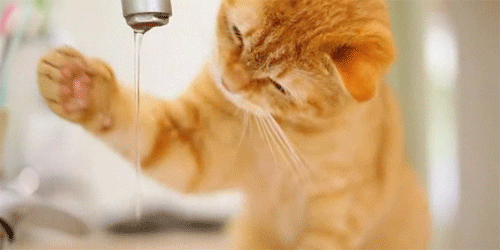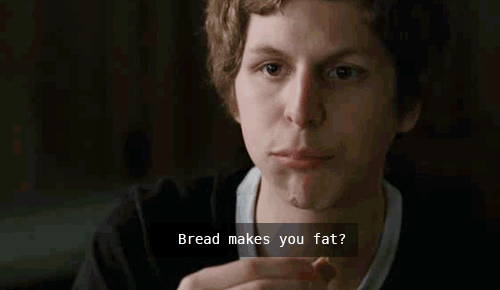
78 astuces épiques de perte de poids pour vous aider à perdre plus de 50 livres pour les filles qui cherchent à perdre du poids sérieux ...
If you are looking for help in weight loss department, you came to the right place. I've been doing a lot of research these past couple of days and I've narrowed it down to these 78 amazing weight loss hacks from real people on Buzzfeed.com who have already lost 50 pounds or more.
These millennials managed to lose all that weight without relying on pills and expensive personal training and here's the amazing real life weight loss wisdom these guys swear by:
1. Stop Weighing Yourself so Much
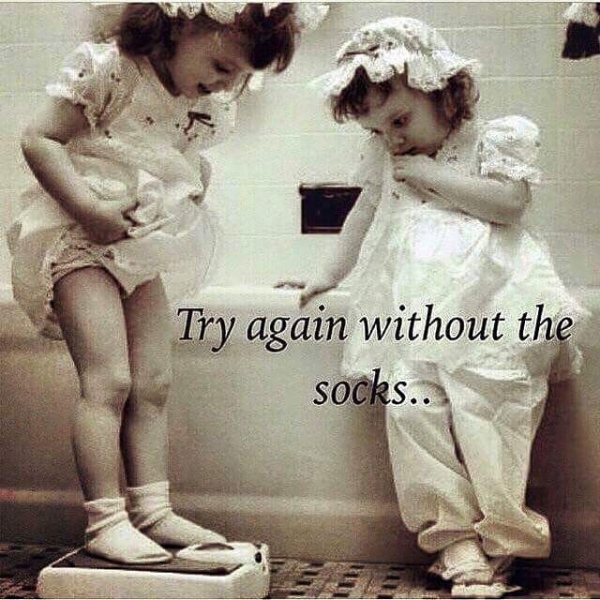 Bien que les chiffres sur la balance peuvent être obstinément le même, vous ne devriez pas être découragés et devenir dépendre uniquement de ces petits numéros.
Bien que les chiffres sur la balance peuvent être obstinément le même, vous ne devriez pas être découragés et devenir dépendre uniquement de ces petits numéros.
If you are working out and eating right, your weight still might stay the same for a while, since the fat is replaced with the muscle weight. What you should look for is the way your body looks - wether it started to look more toned and shapely.
2. Replace Stress-eating with Stress-reducing Activities
 Taking a walk around the block, keeping apples and carrots in the house instead of snack foods, deep breathing exercises - are all good to reduce stress and stop nibbling when feeling anxious and low.
Taking a walk around the block, keeping apples and carrots in the house instead of snack foods, deep breathing exercises - are all good to reduce stress and stop nibbling when feeling anxious and low.
3. Learn the Difference between Hunger and Cravings
 Hunger means it’s time to fuel the body. Cravings are what you want to fuel the body.
Hunger means it’s time to fuel the body. Cravings are what you want to fuel the body.
When starting a new regimen, people will often cut down on portion size. The problem is they forget to snack and drink water between meals. This leaves them with stomach grumbles that will often sound like ‘Five Guys burgers’ or ‘Chipotle burrito.’
Learning the difference between hunger and craving was a lightbulb moment. It really set me on the right path.
4. Notez les raisons que vous essayez de perdre du poids et se référer à elle souvent
 Je me sers des stratégies cognitivo-comportementale. ... J'ai mes listes de pourquoi j'ai fais et mes cartes de lire quand je me sens revers à venir. Je m'empêcher d'avoir les revers — ou du moins [set m'up] remettre tout de suite sur les rails.
Je me sers des stratégies cognitivo-comportementale. ... J'ai mes listes de pourquoi j'ai fais et mes cartes de lire quand je me sens revers à venir. Je m'empêcher d'avoir les revers — ou du moins [set m'up] remettre tout de suite sur les rails.
5. Don’t Deprive Yourself. do Strive for Balance
 Il suffit de dire: ' vous savez quoi, je ne suis pas parfait. Je vais manger un steak chaque fois que dans un certain temps, ou ce morceau de gâteau, mais il n'est pas diminuer ma valeur ou valeur de mon objectif. »
Il suffit de dire: ' vous savez quoi, je ne suis pas parfait. Je vais manger un steak chaque fois que dans un certain temps, ou ce morceau de gâteau, mais il n'est pas diminuer ma valeur ou valeur de mon objectif. »
Constant reminders of self-worth are very essential.
6. Keep the Whole Thing in Perspective Because You’re Actually Crushing It
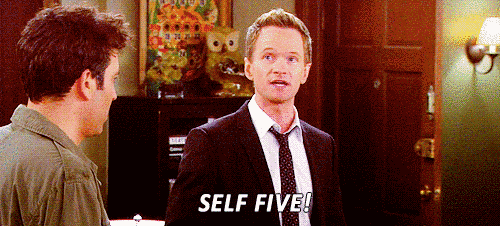 When I have setbacks and spend several days eating mostly trash, I remind myself that even on my bad days now, I’m still doing better than I was on an average day before.
When I have setbacks and spend several days eating mostly trash, I remind myself that even on my bad days now, I’m still doing better than I was on an average day before.
Who cares if I go 500 calories over and hit 2,000? It’s better than the 2,400 I was easily consuming daily in the past.
7. Measure Fat Loss Not Weight Loss
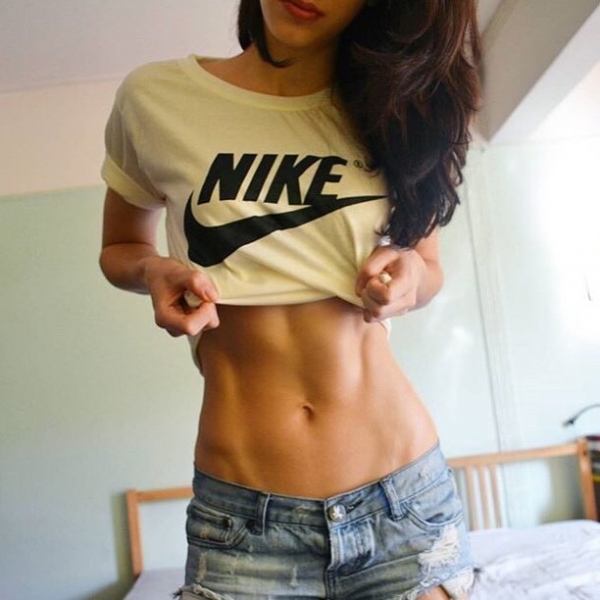 The only thing that could motivate me once I hit a plateau was how far I had already come. My biggest tip would be to take pictures and document fat loss, not just weight loss.
The only thing that could motivate me once I hit a plateau was how far I had already come. My biggest tip would be to take pictures and document fat loss, not just weight loss.
That way, when you come to rough patches where the scale isn’t moving or you feel like nothing’s changing, you have solid proof through pictures or measurements or body fat percentage that there are definitely changes occurring.
8. Drink Less Booze
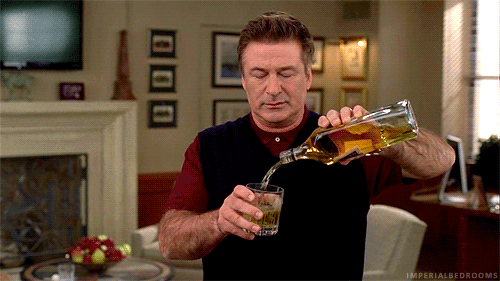 I love beer. However … it’s just not healthy for me to drink once a week. I sleep better, I feel better, and I really do think this has changed my metabolism, too. I never thought I’d be able to do without my happy hours, but it’s better this way for me.
I love beer. However … it’s just not healthy for me to drink once a week. I sleep better, I feel better, and I really do think this has changed my metabolism, too. I never thought I’d be able to do without my happy hours, but it’s better this way for me.
9. And Be Sure to Change up Your Workouts Regularly
Mixing your routine up is always a good way to get out of a health rut. Running and weightlifting are my main workouts, but I’ve been getting into boxing and it is an amazing full-body strength and cardio workout!
10. Register for a Race
I found out that what kept me motivated to keep going was that I was actually terrified of this [triathlon]. It was out of my comfort zone. It was something I’ve never done before and the fear of literally dying (drowning in the swim or crashing on the bike) is what pushed me to get up at 4:30 a.m. for the pool and to stick with my training and practice.
As terrible as that sounds, I scared myself into getting healthier.
11. Take It One Healthy Choice at a Time and before You Know It You’ll Be on Autopilot
 People expect it to happen right away. … But for most people, it’s waking up and spending a lot of your day reminding yourself to make healthy choices. It’s hard.
People expect it to happen right away. … But for most people, it’s waking up and spending a lot of your day reminding yourself to make healthy choices. It’s hard.
The longer you eat healthy, the less you want junk food! I thought it would be the opposite, but after a while it seems a little unnecessary. For at least six months I banned myself from having any sweets, and now I don’t want to touch some of my old favorite sweet foods. I love yogurt and fruits now, and I didn’t think that was possible.
12. Join a Community That Holds You Accountable
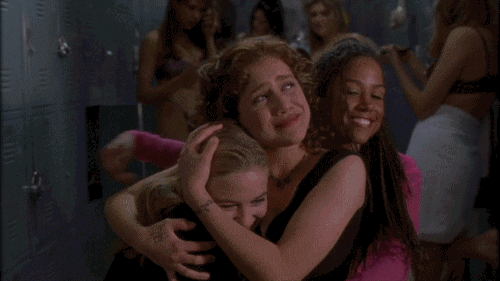 I joined a program that focused on clean eating and high-intensity interval workouts. But the most important factor for me was the support, and the workout friends that became family.
I joined a program that focused on clean eating and high-intensity interval workouts. But the most important factor for me was the support, and the workout friends that became family.
If I hadn’t had that, there would have been many days where I would not have gone to work out!
13. And Most Importantly, Remind Yourself Who You’re Doing This for. (You.)
 onafitnessfrenzy.com
onafitnessfrenzy.com
There will be times you want to quit, times you want to just let yourself go again, and times you will face negative people.
Ignore all of it because at the end of the day, looking in the mirror and smiling at yourself is more important than looking at a stranger and wondering what they think of you.
14. Don’t Fall into the Trap of Thinking That Slip-ups and Failure Are the Same Thing
 The most important thing is to not fall into the trap of ‘I messed up, so I might as well just [give up on] the whole thing.’ Those three cookies probably didn’t do too much harm. That whole box will be much harder to compensate for.
The most important thing is to not fall into the trap of ‘I messed up, so I might as well just [give up on] the whole thing.’ Those three cookies probably didn’t do too much harm. That whole box will be much harder to compensate for.
[This time] I just recognized when I made an iffy food decision, and kept moving along making healthy ones, instead of going, ‘Oh, you had some candy, might as well order deep-dish pizza.
15. Look at Yourself Expecting to See and Intending to Celebrate Progress
 I’ve found that because you see yourself daily, it’s hard to notice how far you’ve come. When I feel this way, I’ll put together a before and after photo just to remind myself of how I looked vs. how I look.
I’ve found that because you see yourself daily, it’s hard to notice how far you’ve come. When I feel this way, I’ll put together a before and after photo just to remind myself of how I looked vs. how I look.
16. Remember That You’re Doing This Not Just for the Result but for the Journey, Too
 I, like many, think that if I eat something ‘wrong’ or have a bad day, week, etc., my goal is no longer achievable and I have proven that I am a failure … Also, when I am working out consistently and eating properly and all that good stuff, and still see an unwavering number on the scale, it gets very discouraging. The best way to conquer those two feelings are to remember you are doing this not only for the end result, but to enjoy the beautiful process and ride that leads there.
I, like many, think that if I eat something ‘wrong’ or have a bad day, week, etc., my goal is no longer achievable and I have proven that I am a failure … Also, when I am working out consistently and eating properly and all that good stuff, and still see an unwavering number on the scale, it gets very discouraging. The best way to conquer those two feelings are to remember you are doing this not only for the end result, but to enjoy the beautiful process and ride that leads there.
Constant reminders of self-worth are very essential.
17. Think of Fitness as a Way to Practice Self-care, Whether That Means Working out or Taking a Rest Day
 I have to remind myself daily that my fitness is a part of my self-care and that I need to honor my body and mind — if it means pushing myself through that last rep or taking a day off.
I have to remind myself daily that my fitness is a part of my self-care and that I need to honor my body and mind — if it means pushing myself through that last rep or taking a day off.
18. Change the Way You Speak to Yourself
 I had to reinvent the way I speak to myself. I had to look in the mirror and smile when I saw the changes in my face, not look for flaws elsewhere. I set small goals and gave myself a lot of positive reinforcement…
I had to reinvent the way I speak to myself. I had to look in the mirror and smile when I saw the changes in my face, not look for flaws elsewhere. I set small goals and gave myself a lot of positive reinforcement…
But most importantly, I had to undertake this for me and because it was my choice. I had to decide I was worth it.
19. Realize That Setbacks Are Basically Part of the Plan
 In the beginning, setbacks will always get you down. You’ll feel defeated and like there’s no point. But after a few (dozen) setbacks, you begin to realize that’s part of the process. Every program and diet doesn’t work the same for everyone. You’ll find the one that works best, then you’ll stumble along the way.
In the beginning, setbacks will always get you down. You’ll feel defeated and like there’s no point. But after a few (dozen) setbacks, you begin to realize that’s part of the process. Every program and diet doesn’t work the same for everyone. You’ll find the one that works best, then you’ll stumble along the way.
But stumbling isn’t failing. It’s learning.
20. Don’t Deprive Yourself
 I sometimes think that one party, one piece of cake, one cookie will undo everything. I feel like I am going to undo all of the weight loss. I still feel sometimes like one beer or one cookie will make me gain everything back.
I sometimes think that one party, one piece of cake, one cookie will undo everything. I feel like I am going to undo all of the weight loss. I still feel sometimes like one beer or one cookie will make me gain everything back.
The truth is that I can still enjoy beer, cake, etc. in moderation. My unhealthy life was full of these things all day, every day. I have to remind myself that my healthy life does not include these things every day, but only once in a while.
21. Set Multiple Goals Including Some That Don’t Have Anything to do with Weight Loss
 I set a final goal weight for myself, but I also had other long-term goals, short-term goals, weight loss goals, and fitness goals.
I set a final goal weight for myself, but I also had other long-term goals, short-term goals, weight loss goals, and fitness goals.
It helped me to have lots of them, because if I got behind on one or didn’t reach one on time, I still felt good about the other ones that I HAD reached. For example, my running goal was to run a half-marathon by Easter, and I also wanted to hit my goal weight by Memorial Day. I ran the half-marathon, but I didn’t hit my goal weight before Memorial Day, but I was OK with that because I was able to reflect on my other accomplishment.
Because weight loss is complex, and difficult, I found it important to set myself up for success.
22. Get over Gymtimidation by Realizing That People Are Too Wrapped in Their Own Thing to Look at What You’re Doing
 There’s this attitude that people at the gym are smug jerks who will stare and make fun of you. I was certain everyone was wondering what the fat chick was doing at the gym. But then as I started to talk to people, I found out most either were so engrossed in their own fitness journey that they hadn’t thought anything of me at all or they had noticed my progress and were impressed.
There’s this attitude that people at the gym are smug jerks who will stare and make fun of you. I was certain everyone was wondering what the fat chick was doing at the gym. But then as I started to talk to people, I found out most either were so engrossed in their own fitness journey that they hadn’t thought anything of me at all or they had noticed my progress and were impressed.
A couple people who became my friends turned out to have formerly been overweight themselves, but now were in amazing shape.
The only person judging me was me.
23. First, Understand What Body Fat is, What It Does, and How Much is Healthy to Have
 Body fat is actually a tissue our bodies really need. Lofton explains that we need a minimal amount of fat to keep our central nervous system and organs (including our brains) functioning properly. This fat is called essential fat, because it’s absolutely necessary to our health.
Body fat is actually a tissue our bodies really need. Lofton explains that we need a minimal amount of fat to keep our central nervous system and organs (including our brains) functioning properly. This fat is called essential fat, because it’s absolutely necessary to our health.
The body also needs fat for cushioning and insulation, but having too much of it is associated with diabetes, cardiovascular disease, and more. The fat around your abdomen, called visceral fat, is in particular what you want to minimize because it can invade your organs and hinder their ability to function properly.
Comite says that an ideal body fat range for women is 25–28%, and for men 12–15%. Of course, these ranges vary from person to person. Be sure to check in with a doctor if you’re trying to figure our your ideal body fat percentage and how to get there.
24. Yes, Losing Body Fat is Partially about How Many Calories You Eat. so Let’s Just Get That out of the Way First
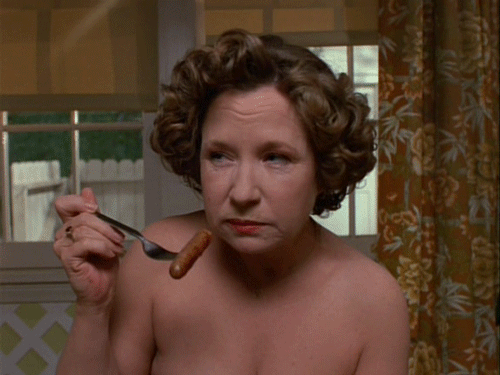 As BuzzFeed Life reported for a previous story, figuring out how much you should eat depends on your goals.
As BuzzFeed Life reported for a previous story, figuring out how much you should eat depends on your goals.
If you’re looking to reduce body fat, you’ll most likely have to find a way to take in fewer calories, on average, than you presently are. Lofton recommends keeping a journal of what you eat across three days (including one weekend day, since weekends tend to be when most people let a little loose) to see where there might some easy fixes to make — like cutting down on alcohol consumption, eliminating sugary drinks, or reducing any portion sizes that seem overly big.
If journaling isn’t for you, you can also use online calculators to give yourself a rough estimate of how many calories you need per day based on your goals.
Now that you have some basic information, either from your journaling or calculations, you can figure out how to adjust your eating habits to support the goal of losing body fat. Keep in mind that the amount of calories you need to reduce each day or week to lose fat will be totally specific to your goals, lifestyle, the exercise you’re doing, any medical conditions, and so on, so you might need to experiment. Otherwise, of course, speak with a doctor or dietitian for more precise numbers.
25. Whatever You do, Don’t Eat a Low-fat Diet
 Lofton says that studies show that people on low-fat diets lose don’t lose weight as readily as those who eat more fat. She says the reason is that low-fat diets are difficult to stick to because it’s dietary fat that makes us feel full. Fat has more calories per gram than protein and carbs (nine in fat versus four in both protein and carbs), and this caloric density makes foods with fat more satisfying.
Lofton says that studies show that people on low-fat diets lose don’t lose weight as readily as those who eat more fat. She says the reason is that low-fat diets are difficult to stick to because it’s dietary fat that makes us feel full. Fat has more calories per gram than protein and carbs (nine in fat versus four in both protein and carbs), and this caloric density makes foods with fat more satisfying.
Lofton recommends getting about 30% of your daily calories from fat. (Twenty percent or lower, she says, constitutes a low-fat diet, and that’s a bit too low for being able to stick to a diet.)
Again, if you’re the calculating type, you can use an online macronutrient calculator to tell you how much fat (and protein and carbohydrates, the other two macronutrients) constitutes a certain percentage of your daily intake.
So, let’s say you’re aiming to eat 1,800 calories per day. You’d want to have about 60 grams of fat per day. To give you an idea of what that looks like in terms of what you’re actually eating, here are a few common foods and how much fat they have per serving :
• 2 tablespoons of peanut butter: 17 grams
• 1 tablespoon of oil (olive, canola, etc.): 14 grams
• 1 ounce (about 20 to 24) almonds: 14 grams
• 1/4 avocado: 7.5 grams
26. But You Probably Should Eat Fewer Carbs
 Carbs are super important. They’re what the body uses for energy — carbs help us think, walk, and move. Not to mention that workouts would suck without them. That said, if you’re trying to lose fat, you don’t want to have a ton of them. Here’s why: Your body uses the carbohydrates you’ve eaten for energy. When it needs more energy, it turns to glycogen, a form of energy made from carbs and kept around until you need it. If your body uses up the glycogen stores and still needs more energy, your body starts burning your fat for energy.
Carbs are super important. They’re what the body uses for energy — carbs help us think, walk, and move. Not to mention that workouts would suck without them. That said, if you’re trying to lose fat, you don’t want to have a ton of them. Here’s why: Your body uses the carbohydrates you’ve eaten for energy. When it needs more energy, it turns to glycogen, a form of energy made from carbs and kept around until you need it. If your body uses up the glycogen stores and still needs more energy, your body starts burning your fat for energy.
So, if you’re trying to lose fat, you want your body to tear through those carbs and glycogen ASAP to start burning fat sooner rather than later.
The best way to do this is to keep your body’s glycogen levels relatively and reasonably low so that your body turns to fat more quickly. Lofton recommends getting about 30% of your daily calories from carbs. This, btw, this isn’t a “low-carb” diet per se. It’s more of a lower-carb diet. The American Academy of Family Physicians defines a low-carb diet as one in which less than 20% of daily calories are coming from carbs.
27. Here’s How to Estimate about How Many Carbs You’re Eating
When it comes to carbs, keep in mind that the number listed next to “carbohydrates” on a label isn’t always representative of how much carbohydrate your body will actually be getting. When looking at a label, subtract the amount of fiber listed from the total number of carbs — since fiber isn’t digested or metabolized like other carbs, the remaining number represents the amount of carbs your body can use (and that’s the number you want to pay attention to).
Lofton says that a serving of carbs is about 15 grams, which is, for example:
• 1 slice of bread
• 1/2 cup oatmeal
• 1 small piece of fresh fruit
• 4 to 6 crackers
Comite recommends sticking to carbohydrates that won’t cause the blood sugar to rise and fall quickly. Look for carbs with a glycemic index rating under 55, like fruit, beans, vegetables, and so on. For more info on foods and their glycemic index rating, check this out.
28. When It Comes to Measuring Progress, Don’t Use a Regular Scale
 Most scales tell you only one thing — how much your body weighs. So when the number moves in either direction you have no way of knowing whether you’re gaining or losing fat, muscle, or both. Comite recommends using a body composition scale like the Withings scale, which will tell you what percentage of your weight is fat.
Most scales tell you only one thing — how much your body weighs. So when the number moves in either direction you have no way of knowing whether you’re gaining or losing fat, muscle, or both. Comite recommends using a body composition scale like the Withings scale, which will tell you what percentage of your weight is fat.
You can also measure your waist circumference with a tape measure. If the number gets smaller, you’re losing the fat around your middle (again, this is the visceral fat associated with all kinds of health problems). Lofton says that women should aim for smaller than a 35-inch waist, and men less than 40 inches. She also recommends measuring your waist no more frequently than once per month.
29. Get Enough Sleep and Make Sure It’s Good Quality
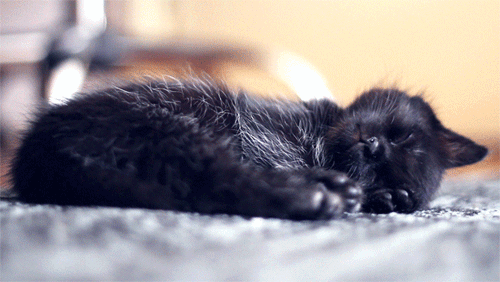 Comite explains (and studies show) that getting adequate, good quality sleep keeps the body’s hormones in balance — hormones that are responsible for regulating metabolism. Not getting enough good-quality sleep can disturb hormonal systems that are responsible for enabling us to lose fat.
Comite explains (and studies show) that getting adequate, good quality sleep keeps the body’s hormones in balance — hormones that are responsible for regulating metabolism. Not getting enough good-quality sleep can disturb hormonal systems that are responsible for enabling us to lose fat.
Plus, research shows that being sleep deprived causes us to crave high-calorie foods.
30. Do Some High-intensity Cardio Exercise
Moderate-intensity steady state cardio has its own health benefits, but burning fat efficiently isn’t one of them. Comite explains that high-intensity interval training is a much more efficient way to burn fat. As explained above, when the body needs energy it will first go dietary carbs, then to its glycogen stores, which you build by consuming carbohydrates. Once you use up the energy provided by glycogen, your body turns to fat, using that to burn energy. Because high-intensity exercise is more demanding, your body more quickly burns through the glycogen and moves on to the fat. Bonus: Higher-intensity exercise keeps burning fat even after you’re done exercising.
Lofton recommends doing 150 minutes of high-intensity exercise per week. This can be broken down however it’s most convenient. Can’t do five 30-minute sessions? How about 15 10-minute sessions? Lofton says that as long as you’re putting in the time, you’re helping your body burn fat.
Check out some of BuzzFeed Health’s great high-intensity workouts, whether you want to run, do bodyweight exercises, or row, cycle, swim, do the elliptical, etc.
31. Make Strength Training Part of Your Routine
The deal with muscle is that it’s a pretty special kind of tissue because it is very metabolically active. This means that whatever your muscles are doing — from standing up and walking to the bathroom to doing a workout — they’re using a lot of energy to do it.
The more muscle you have, the more energy (read: calories) you burn doing the same activities. Comite says that one study found that adding just one pound of muscle can mean the ability to burn 30 to 50 more calories per day.
Get started with these dumbbell workouts!
32. Focus Your Training on Large Muscle Groups for Maximum Effect
 Lofton recommends prioritizing exercises that target the legs, back, and arms. Because they’re the largest muscle groups in the body, targeting these areas will build more muscle than, say, doing a bazillion crunches to build up your relatively tiny abdominal muscles (which are small and require so much less energy to function).
Lofton recommends prioritizing exercises that target the legs, back, and arms. Because they’re the largest muscle groups in the body, targeting these areas will build more muscle than, say, doing a bazillion crunches to build up your relatively tiny abdominal muscles (which are small and require so much less energy to function).
33. Give up Sugary Drinks
 “Sugary drinks gotta go. They will never satiate you,” says Lofton. “They give you extra carbs that will be converted into fat.”
“Sugary drinks gotta go. They will never satiate you,” says Lofton. “They give you extra carbs that will be converted into fat.”
34. Read Labels
 If you’re going to try to pay attention to how much fat, carbohydrates, and protein you’re eating, you need to understand how much of each are in your food. Pay attention to the numbers on the label and what they mean for your overall goals. You can use an app like MyFitnessPal to track not just calories but macronutrients, too.
If you’re going to try to pay attention to how much fat, carbohydrates, and protein you’re eating, you need to understand how much of each are in your food. Pay attention to the numbers on the label and what they mean for your overall goals. You can use an app like MyFitnessPal to track not just calories but macronutrients, too.
35. Or Just Guesstimate Portions and Servings Wisely
If you’re not interested in tracking your macronutrient intake to the very gram but still want to keep an eye on things, you can just familiarize yourself with common serving sizes with a chart that makes it easy to understand and visualize how much you’re eating without getting super involved in numbers and tracking.
36. Make Sure You’re Drinking Enough Water
“If you don’t have enough water, you can’t burn energy efficiently in the same way, including sugar,” says Comite. “If you’re drinking water you’re going to be better at losing fat.” To figure out how much water you should drink per day, divide your weight in half, Lofton says, and drink that many ounces of water per day.
37. Don’t Overdo the Post-workout Snack
Lofton says that most average exercisers who work desk jobs and work out for even up to 90 minutes per day probably aren’t depleting their carbohydrate stores to the point that they need to refuel with a real recovery meal or snack. If you’re working out for about an hour and a half per day and are otherwise mostly sedentary, your post-workout snack should be about 30 grams of carbs. That’s two small pieces of fruit or a 6-inch tortilla and two tablespoons of hummus.
OK, so that’s a lot to think about. 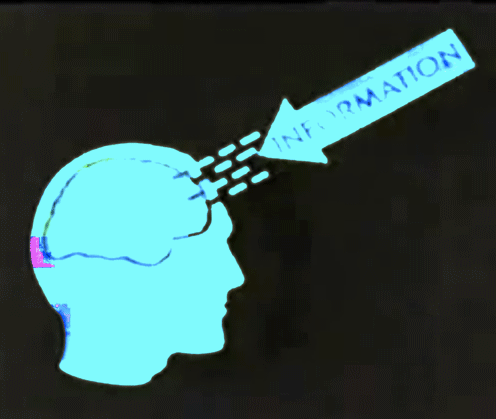 If you’re thinking of trying to lose fat, the tips above will be helpful — but remember to check with a doctor before making any big changes to your diet or exercise routines. And also remember to check with yourself to make sure your goals for physical fitness match up with your goals for your mental health and lifestyle.
If you’re thinking of trying to lose fat, the tips above will be helpful — but remember to check with a doctor before making any big changes to your diet or exercise routines. And also remember to check with yourself to make sure your goals for physical fitness match up with your goals for your mental health and lifestyle.
38. Don’t Skip Breakfast
 Don’t skip breakfast. It is important to start up your metabolism. Hunger sets in long before it’s time for lunch, so those who haven’t had breakfast often reach for snacks that are high in fat or sugar.
Don’t skip breakfast. It is important to start up your metabolism. Hunger sets in long before it’s time for lunch, so those who haven’t had breakfast often reach for snacks that are high in fat or sugar.
39. Eat Your Carbs Earlier in the Day
It is easier to digest carbs earlier in the day. So while it is important to eat a balanced diet, keeping your carb heavy meals at breakfast will help you stay fit.
40. Ditch the Elevator for the Stairs
 Taking the stairs can shrink your waist by 2% in 12 weeks. How cool is that?
Taking the stairs can shrink your waist by 2% in 12 weeks. How cool is that?
41. Memorize This Handy Guide to Help You Estimate Portions
Oh, and the size of salad can be as big as you can handle, so, step up that veggie game!
42. Learn What You’re Really Craving
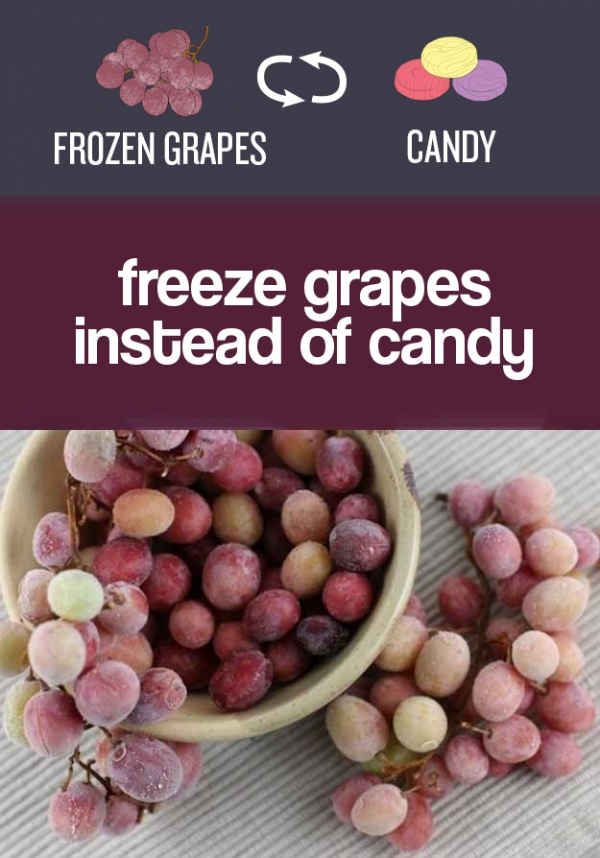 When you think you’re craving candy, you may just be craving sugar. Eating a piece of fruit can eliminate this quickly. The more you know about what your body really wants, the more likely you are to find a healthy alternative and feel satisfied.
When you think you’re craving candy, you may just be craving sugar. Eating a piece of fruit can eliminate this quickly. The more you know about what your body really wants, the more likely you are to find a healthy alternative and feel satisfied.
43. Eat Your Calories Instead of Drinking Them
 Don’t waste calories by drinking them. Chewing triggers satiety, so you may take in 15% fewer calories than if you eat your apple instead of drinking its juice.
Don’t waste calories by drinking them. Chewing triggers satiety, so you may take in 15% fewer calories than if you eat your apple instead of drinking its juice.
44. Make a Plan to Drink More Water
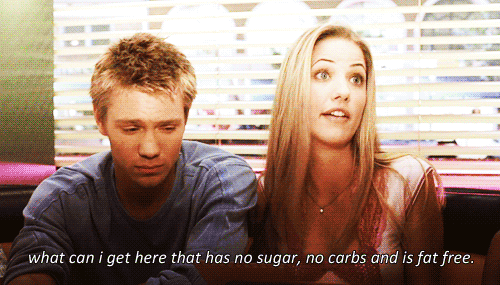 You’ve been told a million times to drink water but that doesn’t make it any easier to remember while you’re busy. So link your sips to something you do often, for example whenever you check your email. This will keep you full all day and make sure you get the amount you should have.
You’ve been told a million times to drink water but that doesn’t make it any easier to remember while you’re busy. So link your sips to something you do often, for example whenever you check your email. This will keep you full all day and make sure you get the amount you should have.
45. And Drink a Glass before Your Meal
 Often when you think you’re hungry you’re actually just thirsty. Try to stop yourself from going for the bread by drinking water instead. It will also help you digest your food better.
Often when you think you’re hungry you’re actually just thirsty. Try to stop yourself from going for the bread by drinking water instead. It will also help you digest your food better.
46. Ditch Your Chair for a Standing Desk
 There are tons of benefits from getting a standing desk, one being that you’ll lose weight.
There are tons of benefits from getting a standing desk, one being that you’ll lose weight.
47. Keep Healthy Snacks with You
 Fail to plan, plan to fail. Make sure you have food options with you to cut down on vending machine adventures.
Fail to plan, plan to fail. Make sure you have food options with you to cut down on vending machine adventures.
48. Skip Soda and Go with Green Tea
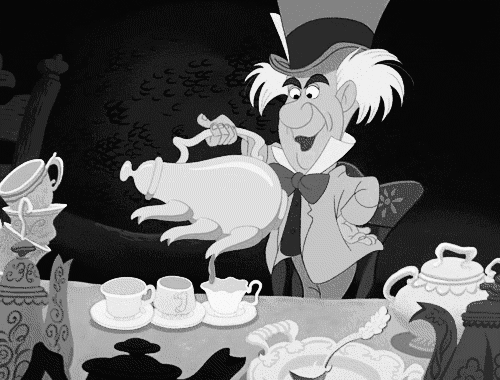 A study for The Journal of Nutrition found that green tea decreases body fat. It’s also a great way to get calorie-free caffeine.
A study for The Journal of Nutrition found that green tea decreases body fat. It’s also a great way to get calorie-free caffeine.
49. Put Your Food on Smaller Plates. Extra Points if the Dishware is Blue!
 Prone to overeating? Putting your food on smaller plates will help you eat only the amount you should. For something a little extra, use blue plates. The color blue can act as a appetite suppresent. Grab this adorable dishware here.
Prone to overeating? Putting your food on smaller plates will help you eat only the amount you should. For something a little extra, use blue plates. The color blue can act as a appetite suppresent. Grab this adorable dishware here.
50. Don’t Just Whip out Your Credit Card; Pay with Cash
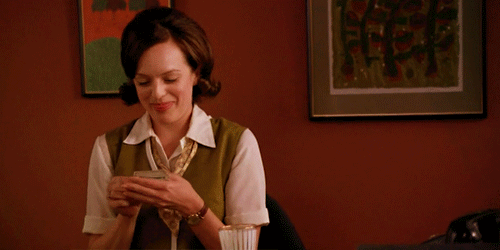 You’re more likely to impulse buy food when you can pay with a credit card. Taking the time to count out your money makes you more aware of what you’re purchasing.
You’re more likely to impulse buy food when you can pay with a credit card. Taking the time to count out your money makes you more aware of what you’re purchasing.
51. Think about What You’re Putting in Your Salad
 Salads can be deceivingly high in calories. Make sure your salad is balanced by skipping the high calorie options (like fried chicken or fatty salad dressings) and cut the size of your portions.
Salads can be deceivingly high in calories. Make sure your salad is balanced by skipping the high calorie options (like fried chicken or fatty salad dressings) and cut the size of your portions.
52. Try to Slow down How Fast You Eat
 By eating slowly you are able to give your stomach time to digest. So you’re more likely to know when you are full and stop eating.
By eating slowly you are able to give your stomach time to digest. So you’re more likely to know when you are full and stop eating.
53. Fidget, Fidget, Fidget!
 Those who spend more than two hours on their feet can lose up to 350 extra calories a day. So, get up and start moving around.
Those who spend more than two hours on their feet can lose up to 350 extra calories a day. So, get up and start moving around.
54. Go Easy on Yourself
 Obsessing over losing weight can become counterproductive. Stress does crazy things to your body and you will have a harder time losing weight if you stress about it. So stay calm and eat clean.
Obsessing over losing weight can become counterproductive. Stress does crazy things to your body and you will have a harder time losing weight if you stress about it. So stay calm and eat clean.
55. Drink Black, Green or White Tea on the Regular
 You’ve heard all about the supposed benefits of tea, but there’s actual research to show those who drink tea from real tea leaves have lower body mass indexes (BMI) and less fat.
You’ve heard all about the supposed benefits of tea, but there’s actual research to show those who drink tea from real tea leaves have lower body mass indexes (BMI) and less fat.
56. Eating Cayenne Pepper Will Address a Whole Lot More than Just Weight Loss
 Yes, due to the ingredient capsaicin, cayenne pepper can increase fat burning in your body, but there’s a laundry list of other benefits as well.
Yes, due to the ingredient capsaicin, cayenne pepper can increase fat burning in your body, but there’s a laundry list of other benefits as well.
Cayenne pepper is also an anti-cold and anti-flu agent, a migraine preventer, a joint pain reliever and a digestive aid.
57. Despite What You May Think, Fruit is Definitely Good for You
 You might have heard you need to be careful with some types of fruit because it’s high in carbs and sugar, but fruit is always a healthy alternative to whatever else you’re shoving into your face in the morning, afternoon or evening.
You might have heard you need to be careful with some types of fruit because it’s high in carbs and sugar, but fruit is always a healthy alternative to whatever else you’re shoving into your face in the morning, afternoon or evening.
And taking it a step further, be sure to skip Juice Generation in favor of the corner grocery store.
Eating your fruit as opposed to drinking it gives you more fiber, keeps you fuller longer, saves you extra calories and is a lot cheaper.
58. A Sure-fire Way to Lose Weight is by Lifting Weights
 For many, it’s hard to get to the gym every day. While there are plenty of other things you can do to lose weight, lifting weights remains one of the oldest and most stable methods of fat burning and weight loss.
For many, it’s hard to get to the gym every day. While there are plenty of other things you can do to lose weight, lifting weights remains one of the oldest and most stable methods of fat burning and weight loss.
Remember, twice a week is still a hell of a lot better than zero times a week.
59. Salads Are Great, but Be Careful about What Goes into Your Leafy Mix
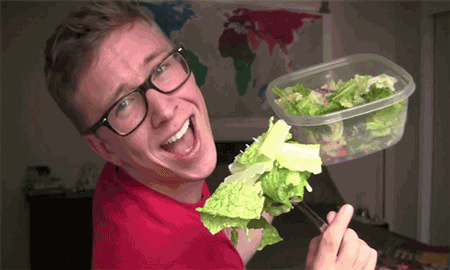 Not only do vegetables fill you up with fewer calories than most other meal choices, but they also provide a solid amount of fiber.
Not only do vegetables fill you up with fewer calories than most other meal choices, but they also provide a solid amount of fiber.
There’s one caveat, though; do not top your salad with fried chicken and buttermilk ranch dressing.
You’re probably not going to be shedding too many pounds if you go this route.
60. Sorry, Omnivores, but Eating Lean Protein is Key to Weight Loss
 Eating vegetables is great, but eating lean protein instead of carbs will not only keep you fuller in between meals, it will increase your metabolism in the process.
Eating vegetables is great, but eating lean protein instead of carbs will not only keep you fuller in between meals, it will increase your metabolism in the process.
61. FIBER is KING
 It’s simple, really. Adding fiber to your diet fills you up, absorbs water in your body and helps keep you regular.
It’s simple, really. Adding fiber to your diet fills you up, absorbs water in your body and helps keep you regular.
According to a recent study, women who doubled their fiber intake to 24 grams a day absorbed 90 calories less a day. This act alone could help you lose roughly 10 pounds a year.
62. I Know You Want It, but Leave the Refrigerator Door Shut after Dinner
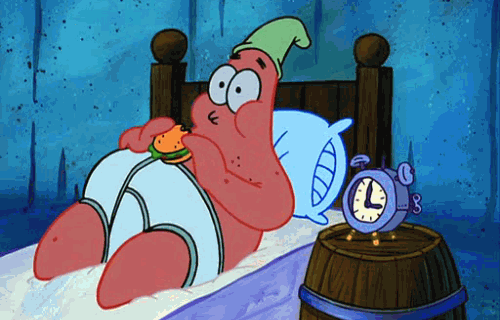 It’s pretty well known that late-night snacking leads to weight gain.
It’s pretty well known that late-night snacking leads to weight gain.
But, did you know that if you’re able to do away with post-dinner munchies on the regular, you could drop an extra five pounds in a week?
63. Don’t Cut out the Booze, Just Grab a Smaller Glass
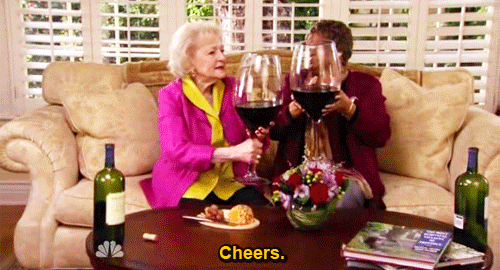 Dieting can be tough, and I’m the last one to tell you to cut out booze all together in an effort to lose weight.
Dieting can be tough, and I’m the last one to tell you to cut out booze all together in an effort to lose weight.
Hell, how am I supposed to make it through the week without talking to my roommate, alcohol?
But just hear me out real quick: If you opt for a four-ounce wine glass a few nights a week, instead of the goblet you drink out of daily, you could shed over 20 pounds in a year.
We still cool?
64. Eating Slower Really is Smarter
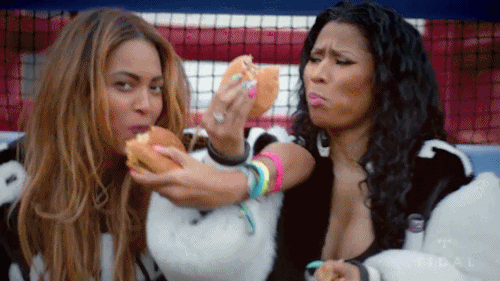 By the time I sit down for dinner, I’m ready to inhale whatever’s on my plate. And even if that’s as healthy a plate as possible, it’s still more beneficial to slow down in between bites.
By the time I sit down for dinner, I’m ready to inhale whatever’s on my plate. And even if that’s as healthy a plate as possible, it’s still more beneficial to slow down in between bites.
Eating slower and chewing every bite will result in eating fewer calories at every meal. Eating fewer calories at every meal will lead to weight loss.
65. Get Moving While Watching Television
 I know it’s increasingly rare for people to watch a show that hasn’t been recorded, but a great way to lose weight while not really doing anything is by “working out” during commercial breaks.
I know it’s increasingly rare for people to watch a show that hasn’t been recorded, but a great way to lose weight while not really doing anything is by “working out” during commercial breaks.
Jumping jacks, push-ups, whatever you chose to do during that two-minute break could result in an extra 270 calories a day being burned. That’s about 28 pounds a year being shredded.
66. Skip the Elevator Line and Take the Stairs
 I know how easy it can be to come into work hungover and opt for an elevator ride instead of sweating the booze out on the stairs, but trust me, it’s worth it.
I know how easy it can be to come into work hungover and opt for an elevator ride instead of sweating the booze out on the stairs, but trust me, it’s worth it.
Two to three minutes a day of stair climbing can burn enough calories to offset the average weight gain of one to two pounds a year.
67. This Can’t Be Said Enough: Bring Lunch from Home!
 This is one of the easiest ways to not only lose weight, but save cash at the same time.
This is one of the easiest ways to not only lose weight, but save cash at the same time.
Instead of paying $12 and taking in a hell of a lot more calories, sodium and fat, you could make lunch at home and slim down your waistline while beefing up your bank account.
Not at all chicken caesar wraps are created equally, remember that.
68. Fidgeting at Work Can Lead to Weight Loss
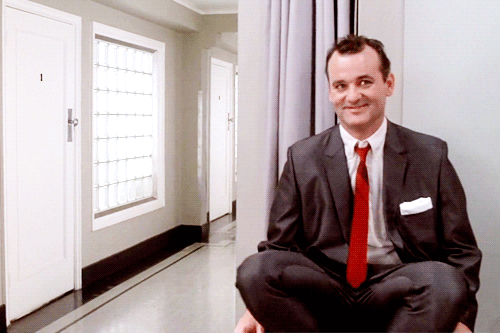 Apparently, your ADHD can help with your desire to shed a few pounds.
Apparently, your ADHD can help with your desire to shed a few pounds.
It turns out those who fidget more at their desks, and around the office in general, weigh less than their coworkers who stay sedentary.
Change positions, move your laptop around and don’t stay seated for too long in any given period.
69. Laugh Your Way to the Beach Body of Your Dreams
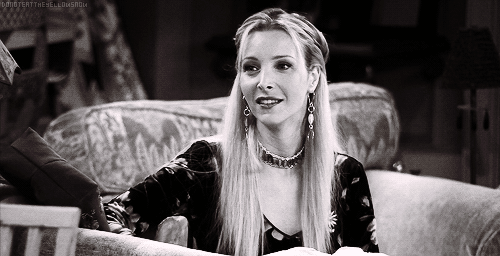 Well, not exactly, but research shows laughing hard for 10 to 15 minutes a day can burn 10 to 40 calories a day.
Well, not exactly, but research shows laughing hard for 10 to 15 minutes a day can burn 10 to 40 calories a day.
Laugh every day for a year and, well, that’s a good amount of calories.
70. Sleep Your Way to a Slimmer You
 Working long hours is part of the weekly grind, but you really should do your best to get to bed as early as possible, as often as possible.
Working long hours is part of the weekly grind, but you really should do your best to get to bed as early as possible, as often as possible.
A study at the University of Pennsylvania found that after just 11 days, a group of sleep-deprived individuals gained nearly three pounds, compared to a control group that was “well rested.”
71. We All Go through Ups and Downs, There’s Never a Reason to Give up Entirely
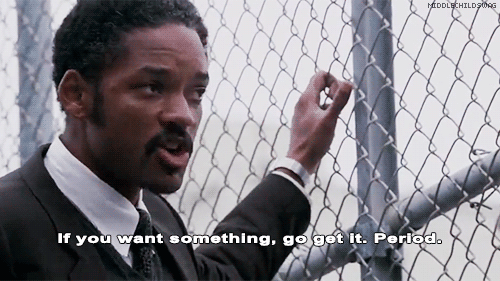 Sh*t gets hard sometimes, and we fall off a bit.
Sh*t gets hard sometimes, and we fall off a bit.
But, just like in our relationships and careers, it’s important to get back on track as soon as possible.
So what if you went on a five-day bender and ate cheeseburgers at 2 am every night? It’s never too late to get back on the horse — just make sure that horse is made of kale.
72. Starvation is Not the Key to a Thinner, Healthier You
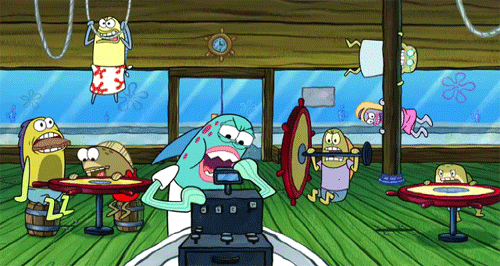 In most cases, you will lose weight if you consume fewer calories a day than you burn off, but how you go about doing this is very complex.
In most cases, you will lose weight if you consume fewer calories a day than you burn off, but how you go about doing this is very complex.
You may think you’re going to lose weight by skipping a snack or even a whole meal entirely, but you’re really doing far more harm than good.
Your brain needs glucose in order to have the ability to keep your appetite in check, so by eating — as long as it’s a healthy item — you’re actually empowering yourself not to binge eat at night.
In fact, most folks who eat fewer than three meals a day actually end up consuming more calories a day.
73. Liquid Calories Are Torpedoing Your Quest to Get (and Stay) in Shape
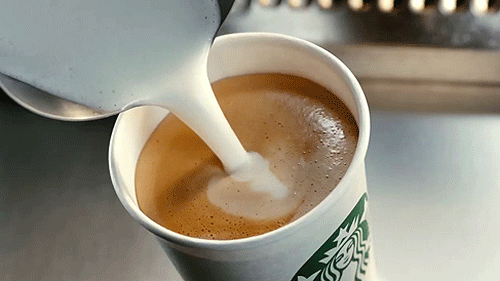 According to a recent study, Americans obtain 21 percent of their daily calories from beverages alone.
According to a recent study, Americans obtain 21 percent of their daily calories from beverages alone.
And while you may think you’re saving calories by eating less and choosing a more filling drink, in reality, the 10 drinks you had at the bar last night, the mochachacalaka coffee thing you get every afternoon and even that supposedly “healthy” smoothie are doing way more damage than you probably thought.
About 400 calories for one strawberry-mango disaster?!?!
Water remains the best beverage option for a multitude of reasons, but we’re all human, so try club soda or vegetable juice if you need a different drink option.
74. The “make Your Own Salad” Bar is Making You Question Your Sanity
 A salad is a great idea for lunch, but putting everything but the kitchen sink into your bowl is a surefire way to pack on the pounds.
A salad is a great idea for lunch, but putting everything but the kitchen sink into your bowl is a surefire way to pack on the pounds.
Adding bacon, fried chicken, mounds of cheese and a creamy dressing could leave you with a salad that contains more calories than a regular burger. Make sure to top your greens with light and simple items and, for the love of God, stay away from ranch, caesar and blue cheese dressings.
Also, don’t forget to vary your greens. Romaine, kale and spinach are not the same things.
75. The Weekend is Not a License to Throw Every Healthy Eating Habit out the Window
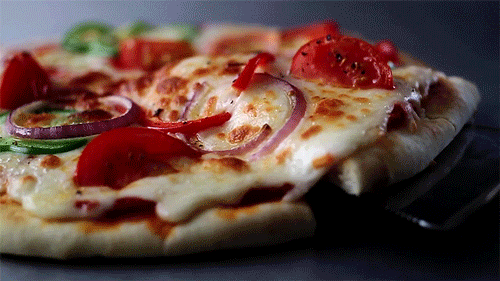 You’ve struggled through kale salads all week, and you have brunch scheduled for both days this weekend, but don’t completely undo all the good you’ve done over the last five days.
You’ve struggled through kale salads all week, and you have brunch scheduled for both days this weekend, but don’t completely undo all the good you’ve done over the last five days.
Two full days of drinking and eating nothing but pizza, burgers and street meat will leave you with problems that can last far beyond your last Bloody Mary on Sunday afternoon.
Palmitic acid is found in a lot of the fatty foods you may like to consume on the weekend, and leptin is a hormone that aids in appetite regulation.
According to Deborah Clegg, Ph.D., at the University of Texas Southwestern Medical Center,
We found that within three days, the saturated fat blunts or blocks the ability of leptin to regulate food intake and body weight.
Let your leptin live, people.
76. Paying the $2 Extra for Sweet Potato Fries Might Not Be Worth It
 Look, I love sweet potato fries as much as the next person, but we can’t be fooled into thinking we’re actually being healthy by choosing this as a side option instead of regular fries.
Look, I love sweet potato fries as much as the next person, but we can’t be fooled into thinking we’re actually being healthy by choosing this as a side option instead of regular fries.
On their own, sweet potatoes provide beta-carotene, vitamin C, folic acid, potassium and fiber, and all for just 100 calories per potato.
But soak those orange spuds in burning hot oil, and you’re jacking up the fat and calorie content to crazy high levels.
And while we’re on the subject, fried vegetables in general aren’t good for you. Zucchini actually loses some of its antioxidant power after being breaded and fried.
Have your potato baked instead of fried, and you’ll be happier in the end.
77. Binging on Olive Oil and Avocados Will Turn “good” Fat Bad, Real Quick
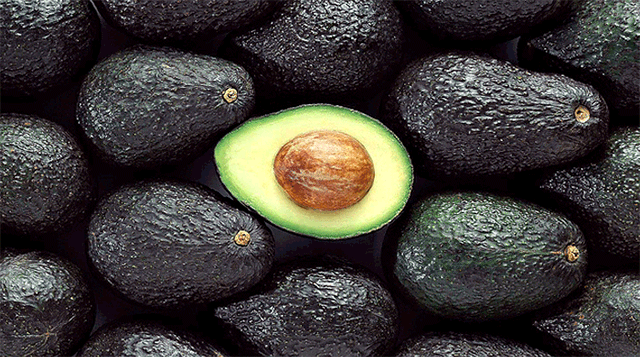 Yes, olive oil and avocados are packed with monounsaturated fat, which can help lower LDL cholesterol.
Yes, olive oil and avocados are packed with monounsaturated fat, which can help lower LDL cholesterol.
But, olive oil packs about 14 grams of total fat and 119 calories per teaspoon while one avocado contains around 322 calories and almost 30 grams of fat.
I’m not at all suggesting you give up these healthy foods entirely, but it’s extremely important to have them in moderation.
Cooking with a little olive oil is great; dousing your bread in it like a sponge is not.
78. You Struggle with the Difference between Snacking and Overeating
 It’s terrible to skip meals and snacks in favor of “saving” all your calories for one big meal at the end of the day, but it’s also detrimental to snack all day long with reckless abandon.
It’s terrible to skip meals and snacks in favor of “saving” all your calories for one big meal at the end of the day, but it’s also detrimental to snack all day long with reckless abandon.
You’re starving when you get home from work, and that’s why it’s important to plan meals out for the week and do your best not to stuff your face as soon as you walk in the door.
These 78 Weight Loss Hacks worked for these millennials, and if they worked for them - they can work for you! Just keep going and you'll get to your weight goal sooner than you think!
Sources: buzzfeed.com, instagram.com, giphy.com






